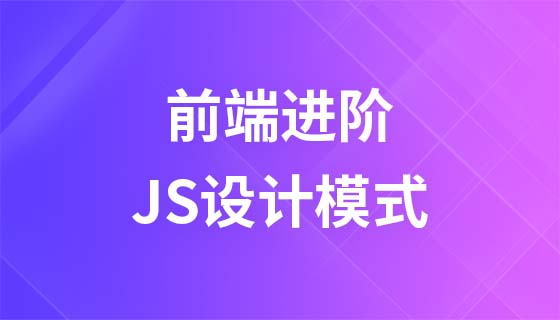GolangRPC服务构建:net/rpc与gRPC对比
时间:2025-07-29 23:53:32 211浏览 收藏
本篇文章给大家分享《Golang构建高可用RPC服务:net/rpc与gRPC对比》,覆盖了Golang的常见基础知识,其实一个语言的全部知识点一篇文章是不可能说完的,但希望通过这些问题,让读者对自己的掌握程度有一定的认识(B 数),从而弥补自己的不足,更好的掌握它。
gRPC 是构建高可用 RPC 服务的更优选择。1. 协议与性能方面,gRPC 基于 HTTP/2 和 protobuf,具备高性能、跨语言支持及流式通信能力;而 net/rpc 使用 gob 编码,适合 Go 同构系统内部通信和小型项目。2. 接口定义上,gRPC 需 proto 文件,规范但繁琐;net/rpc 利用反射机制,开发快但接口不清晰。3. 可靠性与扩展性方面,gRPC 支持拦截器、TLS、健康检查和负载均衡等高级功能,生态完善;net/rpc 则需自行实现这些功能。4. 上手难度方面,net/rpc 更简单,适合新手入门,但 gRPC 在大型项目中更具优势。综上,生产环境推荐使用 gRPC,而 net/rpc 适用于原型开发或轻量级场景。

在构建高可用的RPC服务时,Golang 提供了多种选择,其中 net/rpc 和 gRPC 是两个常见方案。它们各有优劣,适用于不同场景。如果你追求简单部署和快速实现,net/rpc 可能更合适;而如果需要高性能、跨语言支持以及流式通信,那 gRPC 更值得考虑。

下面从几个实际使用角度来对比这两者,并给出一些建议。

1. 协议与性能:gRPC 明显占优
net/rpc 默认基于 HTTP 或 TCP,使用 Go 的 gob 编码,协议封闭,不便于跨语言交互。虽然它足够轻量,但在性能上并不突出,特别是在处理大量并发请求时,编码/解码效率较低。
gRPC 则基于 HTTP/2 协议,采用 Protocol Buffers(protobuf)作为接口定义语言和序列化格式,具备更高的传输效率和良好的压缩能力。更重要的是,它支持多语言客户端和服务端,适合微服务架构下的混合技术栈环境。

gRPC 的优势:
- 支持双向流、服务器流、客户端流和普通 RPC
- 基于 HTTP/2,支持多路复用、头部压缩等特性
- 跨语言友好,生态丰富
net/rpc 的适用场景:
- 同构系统内部通信(Go to Go)
- 对性能要求不高、开发周期短的小型项目
2. 接口定义方式:gRPC 更规范,但更繁琐
gRPC 需要先写 .proto 文件来定义服务接口和数据结构,这虽然增加了前期工作量,但也带来了清晰的契约和自动生成代码的好处,有利于维护和文档生成。
net/rpc 直接通过 Go 的反射机制解析结构体方法,省去了中间文件的编写过程,开发起来更快捷,但代价是接口定义不够明确,容易出错且难以调试。
举个例子:
gRPC 中你得先写 proto 文件:
syntax = "proto3"; package example; message Request { string name = 1; } message Response { string message = 1; } service Greeter { rpc SayHello (Request) returns (Response); }而 net/rpc 只需定义一个结构体方法:
type Args struct { Name string } type Reply struct { Message string } func (t *MyService) SayHello(args *Args, reply *Reply) error { reply.Message = "Hello, " + args.Name return nil }
可以看出,gRPC 更严谨,适合长期维护的大项目;而 net/rpc 更适合原型开发或小规模系统。
3. 可靠性与可扩展性:gRPC 生态更完善
gRPC 在高可用方面有很多成熟方案,比如负载均衡、重试策略、拦截器、TLS 支持、健康检查等,这些都可以通过插件或中间件轻松集成。
相比之下,net/rpc 这些功能都需要自己实现或者借助第三方库补充,维护成本较高。
- gRPC 支持的高级功能包括:
- 拦截器(Interceptor)用于日志、鉴权、限流等
- 支持 TLS 加密通信
- 内建健康检查接口
- 多种负载均衡策略(如 round_robin、pick_first)
如果你的服务需要部署在 Kubernetes 等云原生环境中,gRPC 几乎是标配。
4. 上手难度与学习曲线
对于刚接触 RPC 的开发者来说,net/rpc 的确更容易上手。它的 API 简洁,不需要额外工具链,适合教学或快速验证想法。
但一旦项目变大,你会发现 gRPC 的结构化设计反而让后续维护更容易。尤其是 protobuf 的强类型定义和自动生成代码机制,能有效减少运行时错误。
建议新手可以先用 net/rpc 理解 RPC 的基本流程,再逐步过渡到 gRPC。
总的来说,在构建高可用的 RPC 服务时,gRPC 是更现代、更强大也更适合生产环境的选择。而 net/rpc 更像是一个“玩具级”的实现,适合特定场景下使用。
基本上就这些。
今天关于《GolangRPC服务构建:net/rpc与gRPC对比》的内容就介绍到这里了,是不是学起来一目了然!想要了解更多关于的内容请关注golang学习网公众号!
-
505 收藏
-
503 收藏
-
502 收藏
-
502 收藏
-
502 收藏
-
231 收藏
-
293 收藏
-
175 收藏
-
329 收藏
-
166 收藏
-
484 收藏
-
250 收藏
-
156 收藏
-
324 收藏
-
379 收藏
-
220 收藏
-
476 收藏
-

- 前端进阶之JavaScript设计模式
- 设计模式是开发人员在软件开发过程中面临一般问题时的解决方案,代表了最佳的实践。本课程的主打内容包括JS常见设计模式以及具体应用场景,打造一站式知识长龙服务,适合有JS基础的同学学习。
- 立即学习 543次学习
-

- GO语言核心编程课程
- 本课程采用真实案例,全面具体可落地,从理论到实践,一步一步将GO核心编程技术、编程思想、底层实现融会贯通,使学习者贴近时代脉搏,做IT互联网时代的弄潮儿。
- 立即学习 516次学习
-

- 简单聊聊mysql8与网络通信
- 如有问题加微信:Le-studyg;在课程中,我们将首先介绍MySQL8的新特性,包括性能优化、安全增强、新数据类型等,帮助学生快速熟悉MySQL8的最新功能。接着,我们将深入解析MySQL的网络通信机制,包括协议、连接管理、数据传输等,让
- 立即学习 500次学习
-

- JavaScript正则表达式基础与实战
- 在任何一门编程语言中,正则表达式,都是一项重要的知识,它提供了高效的字符串匹配与捕获机制,可以极大的简化程序设计。
- 立即学习 487次学习
-

- 从零制作响应式网站—Grid布局
- 本系列教程将展示从零制作一个假想的网络科技公司官网,分为导航,轮播,关于我们,成功案例,服务流程,团队介绍,数据部分,公司动态,底部信息等内容区块。网站整体采用CSSGrid布局,支持响应式,有流畅过渡和展现动画。
- 立即学习 485次学习
